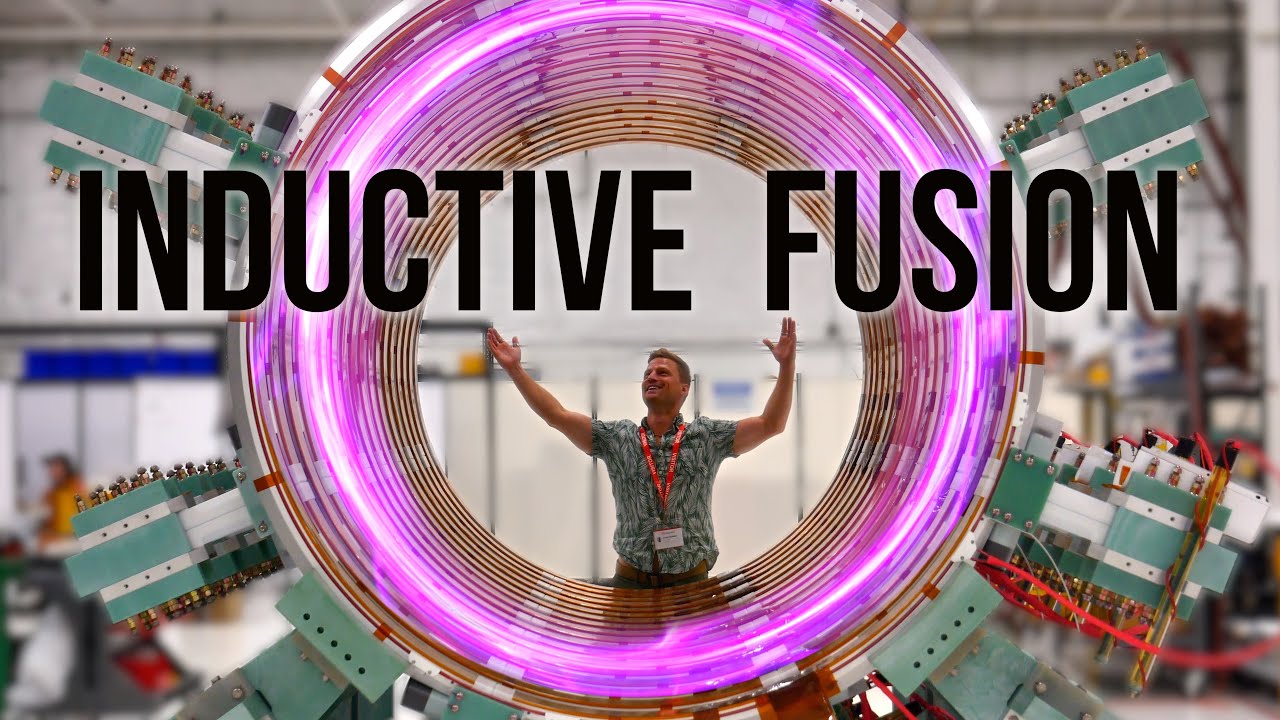Helion Energy was founded in 2013 with the goal of developing nuclear fusion power reactors using a magneto-inertial confinement process where two plasmoids are compressed and heated magnetically in a field-reversed configuration device, then collided at 300 km/sec in a reaction chamber where a fusion occurs in a pulse, causing the plasma to expand, allowing electrical energy to be recovered directly from expansion of the charged plasma, avoiding conversion of energy to heat and downstream electrical generation.
They plan to use the mostly aneutronic deuterium-helium-3 reaction as the main source of power, producing their own helium-3 by means of side reactions producing (with equal probability) helium-3 and tritium, which decays into helium-3. Whether this will produce anywhere near the required amount of helium-3 remains to be seen.
Since 2005, they have produced 7 technology demonstrator and prototype machines, with the latest, Polaris, shown here, expected to be completed in 2024. Early funding was provided by NASA, the U.S. Department of Energy, and Department of Defense. In November 2021, a Series E funding of US$ 500 million with US$ 1.7 billion of follow-on funding based upon achievement of milestones was concluded. This round was led by Sam Altman, CEO of OpenAI, whose other investments include global iris scanning crypto scheme Worldcoin.
The Verge reported on 2023-05-10:
Microsoft just signed a jaw-dropping agreement to purchase electricity from a nuclear fusion generator. Nuclear fusion, often called the Holy Grail of energy, is a potentially limitless source of clean energy that scientists have been chasing for the better part of a century.
A company called Helion Energy thinks it can deliver that Holy Grail to Microsoft by 2028. It announced a power purchase agreement with Microsoft this morning that would see it plug in the world’s first commercial fusion generator to a power grid in Washington. The goal is to generate at least 50 megawatts of power — a small but significant amount and more than the 42MW that the US’s first two offshore wind farms have the capacity to generate today.
Well, if Microsoft thinks a new, untested technology developed by a Seattle-based company which has never once demonstrated the key fusion reaction which is supposed to produce the power they hope to sell, is going to work the first time it is deployed in 2028, who are we to doubt that it’s real?
The presenter in the video, Jay Bowles, whose Plasma Channel has more than 600,000 subscribers, would be more persuasive if he did not consistently confuse topology with “topography”.
